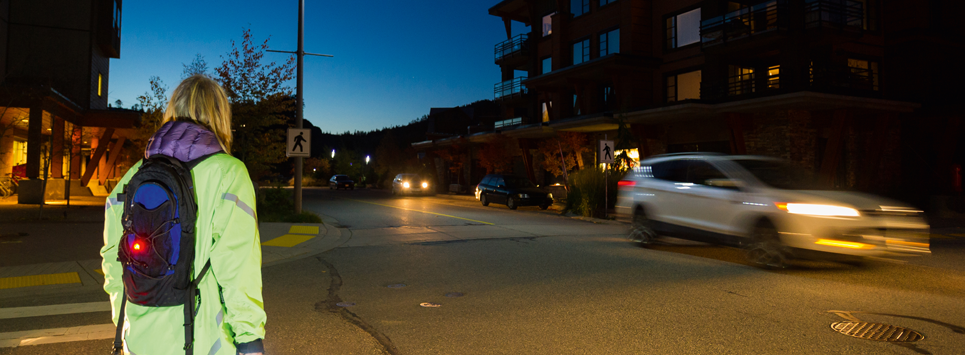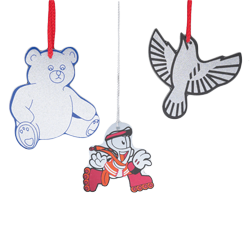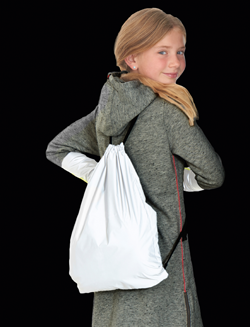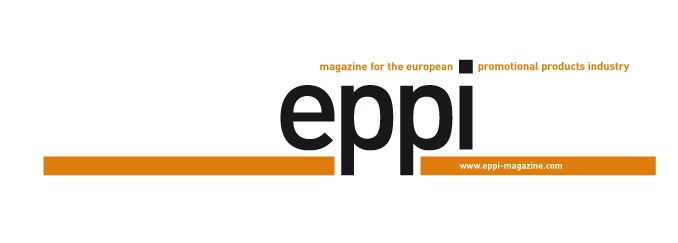People, who don’t take the car to work are doing the environment a favour. However, one’s own safety quickly suffers in poor visibility conditions without safety vests, reflectors and co. Reflective promotional products provide an extra portion of safety in road traffic here. Nevertheless, caution is called for: Only certified products guarantee visibility from all sides.

What did we learn at driving school? When a car is travelling at 50 km/h the stopping distance for an emergency stop is around 30 m – provided that the road is dry and visibility is clear. There is a big difference in the dark, or when rain, snow or black ice prevails – the consequences can be fatal, especially for pedestrians wearing dark clothes, since they only become visible at a distance of approx. 25 m. Vests and jackets with reflective material, luminous strips, patches and pendants can make the wearer visible from a distance of 140 m and thus quickly advance into becoming lifesavers. It is not without good reason that railway labourers, policemen and rescue workers, who are underway in road traffic or working on rail tracks day in and day out, wear special high-visibility clothing. In addition to the fluorescent colours yellow or orange, reflectors attached to the clothes also ensure that headlights are reflected – regardless of the angle of incidence. The principle behind this is retroreflection and it is as equally simple as it is effective: In contrast to a mirror where the angle of reflection always corresponds to the angle of incidence of the light, a reflector disposes of countless small prisms with several reflective surfaces. These break up the ray of light repeatedly until it is reflected back to the source of light – for instance to the approaching car which is throwing light on the cyclist.
Tested down to the last angle

Tested and confirmed to be safe: The reflective accessories of Regine IQtrim comply with the EN 13356 norm.
In order to play it safe in road traffic, a minimum surface of reflective material has to be implemented. For professional high-visibility clothing the surface is strictly defined according to the ISO Norm 20471 and is at least 1,000 cm²; work in the dark is only allowed to be carried out wearing high-visibility clothes of Class 3 upwards, which display 2,000 cm² of reflective material. EN 1150 is decisive for clothes in the non-professional segment such as children’s safety vests that ensure safety on their way to school. The norm allows more leeway, but stipulates a minimum reflective surface of 600 cm² for the smallest possible body size taken into consideration, i.e. 104 cm. “The requirements as well as the tests conducted and the assessment are the same for both standards. However, the range of colours for the fluorescent fabrics in the professional area are limited down to yellow, orange/red and red, whereas pink, green and blue are additionally possible according to EN 1150. Here the manufacturers have more freedom of choice regarding the design and logo placement. Furthermore, the reflective material can be designed in the shape of characters or animals on the safety clothing,” reported Cornelia Pitschel, Laboratory Director at the Leipzig location of TÜV Rheinland. In the course of the EN ISO 20471 and EN 1150 tests, the expert exposes reflective fabrics to diverse pre-treatments and tests their reflective performance. To this end, the material is washed under plausible, reproducible laboratory conditions, exposed to strong temperature deviations of between +50 and -30 °C and is folded repeatedly 7,500 times, material wear and tear is also simulated. The material shouldn’t become brittle, split or break during testing. “We detect obvious damage in a visual examination and subsequently test the reflective effect. For this purpose we shine lights on the material from different angles and using a sensor we detect the reflective rays from direct illumination through to a reflected beam angle of 5°. These tests enable us to simulate everyday situation such as crossing a street. Although the pedestrian is moving and is not always illuminated directly, 360° visibility has to be guaranteed,” stated Pitschel.
Beyond reflective clothing, the norm EN 13356 is applicable. This applies for non-professional protective accessories, i.e. products such as snap wristbands or reflective pendants. Bibs, straps or safety collars for cyclists or joggers also fall under this category. “In the case of accessories, the standard differentiates between rigid products such as reflectors made of plastic and flexible accessories such as foils or reflective straps. The reflection is generated in a different way for the respective product groups – reflective foils for example are vapour-plated with glass beads. So the testing methods have to be adapted to suit the product: The experimental set-up is principally the same, but the angle of observation or illumination has to be chosen differently. Moreover, a rigid reflector like a teddy bear pendant doesn’t have to withstand quite such high demands, because it is not subjected to such heavy strains in the everyday routine as reflective clothing,” added Pitschel.
Illuminating promotional products
Regine IQtrim is a supplier that provides reflective items for all areas of implementation. The company from Albstadt supplies IQseenTM, flexible reflective material that is coated with glass beads and which is available in various colours as yarn or fabric. The material is used for (vocational) clothing, but also for the range of promotional products which encompasses reflective straps, belts and safety collars as well as rucksacks, gym bags and beanies. “For the promotional products area we have our reflective material tested and certified according to EN 13356. This means that we can be sure that the reflective surfaces i.e. of a Reflex-Armbandage that is coated with IQseenTM suffice to protect the wearer in road traffic,” stated Andrea Keinath, who works in the Sales Department at Regine IQtrim. “Beyond the safety aspect, for us it is of course important that the products are also non-toxic. IQseenTM products comply with the Standard 100 by Oeko-Tex® for baby items. In addition, several items are manufactured in compliance with the bluesign® standard,” commented Keinath.

The IQseenTM material by Regine IQtrim makes the wearer more visible.
To make sure that companies are just as visible as their target group when the shiny promotional products are implemented, Regine IQtrim offers diverse customising options for its items that range from wrist straps to safety collars. Among other things, the reflective wristbands or ankle straps can be imprinted on the fabric between the reflective strips. The reflective material can also be embellished with a print, which is very effective on the large surfaces of a rucksack or gym bag for example. “However, the reflective effect is diminished by the imprint. This particularly plays a role in the case of smaller items such as reflectors, which have to display a specific minimum size, in order to be EN 13356-certified. In the case of a highlyreflective, silver material the surface necessary for freely suspended and adhesive accessories as well as for reflective or snap wristbands is at least 15 cm²,” Keinath pointed out. As a standard, Regine IQtrim produces certified pendant reflectors and self-adhesive models as a round execution with a diameter of 5 cm. The reflectors can however also be designed to meet the individual requirements of the customer regarding their shape and imprint. The TÜV stipulates a predefined size for the printing surface of the standard items, which can be transferred accordingly for the special shapes. This does away with the costly and time-consuming individual certification of the special designs. “The custom-made products are very popular – here we can realise everything from a mascot through to individual logos. Furthermore, in the case of dangling reflectors one side can be full-surface imprinted because the free reverse side offers a sufficient reflective surface,” said Keinath. The also coveted bags with an iridescent surface and beanies with IQseenTM yarn are on the other hand not certified due to their lower reflective properties. Here the light reflection merely enhances their appeal on top of the fashion aspect, which turns the promotional messenger into a (safe) eye-catcher on the street.
// Claudia Pfeifer



